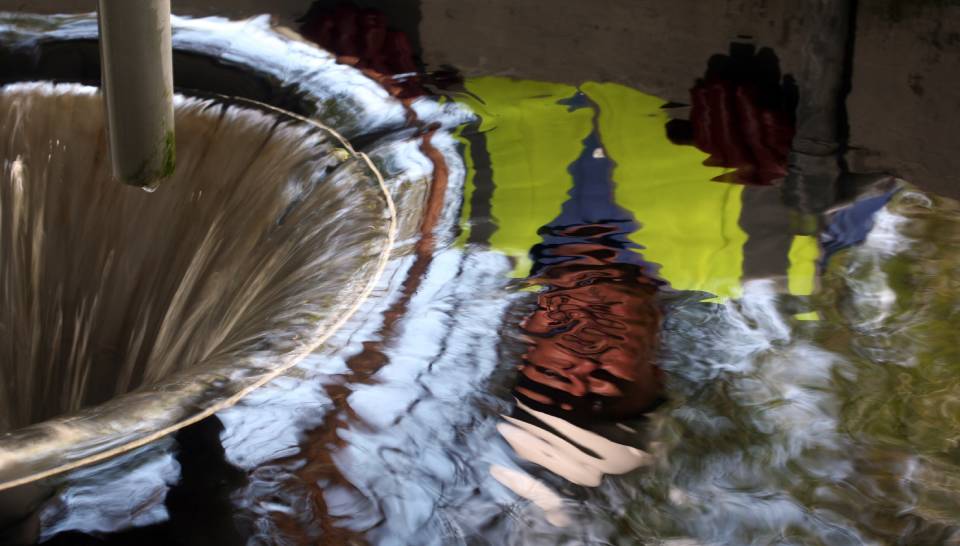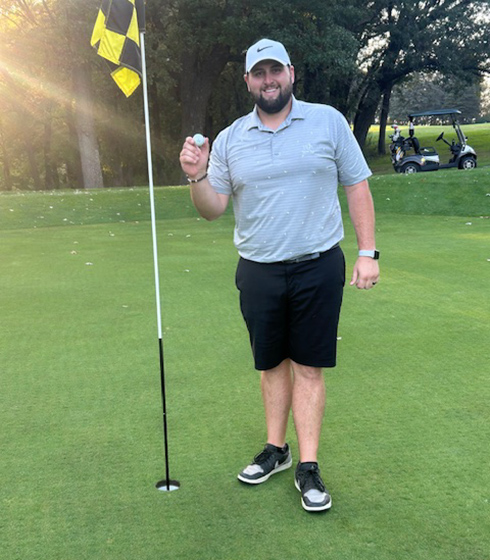Report on the Vitória Water Reclamation Station and its Contribution to Sustainable Development Goals
Project Overview and Strategic Importance
Veolia has been contracted to design and deliver the Vitória Water Reclamation Station (Vitória WRS) in Brazil, set to become the nation’s most advanced municipal wastewater reuse system for industrial applications. This landmark project represents a significant advancement in Brazil’s strategy to combat water scarcity and achieve its national sustainability objectives. The facility is designed to serve as a replicable model for sustainable water management across Latin America.
- Location: Vitória, Brazil
- Processing Capacity: 450 liters per second (l/s), equivalent to 38,880 cubic meters per day (m³/d).
- Primary Objective: To recycle municipal wastewater from the Camburi basin for industrial use, thereby reducing the strain on freshwater resources.
Alignment with SDG 6: Clean Water and Sanitation
The Vitória WRS project directly addresses key targets of SDG 6 by enhancing water quality, increasing water-use efficiency, and ensuring sustainable water supplies.
- Increasing Water Recycling and Reuse (Target 6.3): The facility will recycle 85% of municipal wastewater from its source basin. This initiative is critical for Brazil, where water reuse currently accounts for less than 1% of total water consumption, according to the Brazilian Water Agency (ANA).
- Addressing Water Scarcity (Target 6.4): By redirecting high-quality reclaimed water to industrial partners, the project frees up an amount of freshwater equivalent to the daily needs of approximately 200,000 people, directly mitigating local water stress.
Contribution to SDG 9 and SDG 11: Sustainable Industry, Infrastructure, and Communities
The project is a model for resilient infrastructure and sustainable industrialization, contributing to the development of sustainable urban environments.
- Innovative and Resilient Infrastructure (Target 9.1 & 9.4): As the first project of its kind in Brazil and the world’s first large-scale facility to convert a municipal plant to a reuse production station using Membrane Bioreactor (MBR) and Reverse Osmosis (RO) technologies, it sets a new standard for clean and environmentally sound infrastructure.
- Sustainable Industrialization (Target 9.2): The station will provide a secure and sustainable water supply to major industrial entities, including ArcelorMittal and Vale, enabling them to build resilience against water scarcity and maintain operations crucial to regional socio-economic development.
- Sustainable Cities (Target 11.6): By reducing the environmental impact of the city of Vitória through advanced wastewater management, the project helps create a more sustainable and resilient urban community.
Advancing SDG 12 and SDG 17: Responsible Production and Partnerships
The Vitória WRS embodies circular economy principles and demonstrates the effectiveness of multi-stakeholder partnerships in achieving sustainable development.
- Responsible Consumption and Production (Target 12.2): The project transforms an underutilized waste stream—municipal wastewater—into a valuable resource for industry, promoting the sustainable management and efficient use of natural water resources.
- Partnerships for the Goals (Target 17.17): This initiative is the result of Brazil’s first public tender for water reuse and is led by a strategic public-private partnership between GS INIMA and the Espírito Santo Sanitation Company (CESAN), illustrating a successful model for collaboration to achieve the SDGs.
Technological Framework
The facility’s performance relies on the integration of Veolia’s advanced water treatment technologies to deliver a cost-effective and reliable supply of high-quality reclaimed water.
- memDENSE™: A membrane bioreactor technology for ultra-compact biological treatment, including phosphorus and nitrogen removal.
- ZeeWeed™ 500-EV: Ultrafiltration membranes providing high-efficiency separation of solids.
- PROflex™: A high-recovery reverse osmosis system for advanced contaminant removal, ensuring water is fit for industrial use.
Analysis of SDGs, Targets, and Indicators
1. Which SDGs are addressed or connected to the issues highlighted in the article?
The article on the Vitória Water Reclamation Station (WRS) in Brazil addresses several Sustainable Development Goals (SDGs) by focusing on water scarcity, sustainable infrastructure, industrial innovation, and public-private partnerships.
-
SDG 6: Clean Water and Sanitation
This is the most central SDG to the article. The project’s core mission is to treat municipal wastewater and reuse it for industrial purposes, directly tackling issues of water quality, water scarcity, and efficient water management.
-
SDG 9: Industry, Innovation, and Infrastructure
The article highlights the construction of a new, advanced piece of infrastructure (“Brazil’s most advanced municipal wastewater reuse system”). It emphasizes the use of innovative technologies from Veolia and its role in providing a secure water supply to major industrial players, thereby supporting sustainable industrial development.
-
SDG 11: Sustainable Cities and Communities
The project is a municipal system that improves wastewater management for the city of Vitória. By recycling urban wastewater and freeing up freshwater resources for the population, it helps reduce the city’s environmental impact and enhances resource security for its inhabitants.
-
SDG 12: Responsible Consumption and Production
The project embodies the principles of a circular economy by “transforming an underused waste stream into a valuable resource.” It promotes the efficient use of natural resources (water) by reducing waste and encouraging recycling and reuse, which are key components of sustainable consumption and production patterns.
-
SDG 17: Partnerships for the Goals
The article explicitly mentions that the project is a result of a “strategic partnership between GS INIMA and the Espírito Santo Sanitation Company (CESAN)” and involves other key stakeholders like Veolia, ArcelorMittal, and Vale. This highlights the importance of public-private partnerships in achieving sustainability goals.
2. What specific targets under those SDGs can be identified based on the article’s content?
Based on the details provided, several specific SDG targets can be identified:
-
Target 6.3: Improve water quality by increasing recycling and safe reuse
The article states the project will “recycle 85% of municipal wastewater from Vitória’s Camburi basin.” This directly contributes to the target of substantially increasing recycling and reuse of water globally. The use of advanced technologies to remove “biological phosphorus and nitrogen” also addresses the goal of improving water quality.
-
Target 6.4: Substantially increase water-use efficiency and address water scarcity
The project is a direct response to “the country’s fight against water scarcity.” By creating a new water source for industries, it “frees up freshwater resources equivalent to the needs of nearly 200,000 people,” which increases overall water-use efficiency and reduces the number of people affected by water scarcity.
-
Target 9.1: Develop quality, reliable, sustainable and resilient infrastructure
The Vitória WRS is described as “Brazil’s most advanced municipal wastewater reuse system,” representing a new, high-quality, and sustainable piece of infrastructure designed to provide a “secure and sustainable water supply” and increase resilience to water stress for industries.
-
Target 9.4: Upgrade infrastructure and retrofit industries for sustainability
The project involves the “world’s first large-scale facility to convert a municipal wastewater treatment plant into a water reuse production station” using clean technologies. It enables industrial users like ArcelorMittal and Vale to adopt more sustainable practices by using reclaimed water, thus increasing their resource-use efficiency.
-
Target 12.2: Achieve the sustainable management and efficient use of natural resources
By recycling 38,880 cubic meters of water per day, the project ensures the efficient use of water resources. It “preserv[es] natural water supplies” by providing an alternative to freshwater withdrawals, contributing directly to the sustainable management of this vital natural resource.
-
Target 17.17: Encourage and promote effective public, public-private and civil society partnerships
The article clearly identifies the project as a “strategic partnership between GS INIMA and the Espírito Santo Sanitation Company (CESAN),” which is a public-private entity. The involvement of technology provider Veolia and industrial off-takers ArcelorMittal and Vale makes it a prime example of a multi-stakeholder partnership to achieve sustainable development.
3. Are there any indicators mentioned or implied in the article that can be used to measure progress towards the identified targets?
Yes, the article contains several quantitative and qualitative indicators that can be used to measure progress:
-
Indicator for Target 6.3 (Water Treatment and Reuse):
The proportion of wastewater treated is explicitly stated: “recycle 85% of municipal wastewater from Vitória’s Camburi basin.” This is a direct measure of progress.
-
Indicators for Target 6.4 (Water Efficiency and Scarcity):
- Volume of recycled water: The plant’s capacity is quantified as “450 liters per second (l/s)” or “38,880 cubic meters per day (m3/d).” This measures the volume of water being used more efficiently.
- Impact on freshwater availability: The project’s contribution is measured by the amount of freshwater saved, which is “equivalent to the needs of nearly 200,000 people.“
- Increase in national water reuse: The article notes that water reuse in Brazil is currently “less than 1% of total water consumption.” This project serves as a baseline against which future increases in the national reuse rate can be measured.
-
Indicator for Target 9.4 (Adoption of Clean Technologies):
The adoption of specific advanced technologies is mentioned, including “memDENSE™ membrane bioreactor,” “ZeeWeed™ 500-EV ultrafiltration membranes,” and “PROflex™ high-recovery reverse osmosis.” The implementation of these technologies serves as a qualitative indicator of technological upgrading for sustainability.
-
Indicator for Target 17.17 (Partnerships):
The existence and nature of the partnership itself is an indicator. The article identifies the key partners involved: GS INIMA, CESAN (public-private), Veolia (private technology provider), and ArcelorMittal and Vale (private industrial users). This demonstrates a functional public-private partnership model.
4. Table of SDGs, Targets, and Indicators
| SDGs | Targets | Indicators Identified in the Article |
|---|---|---|
| SDG 6: Clean Water and Sanitation | 6.3: Improve water quality, increase recycling and safe reuse.
6.4: Increase water-use efficiency and address water scarcity. |
– 85% of municipal wastewater from the Camburi basin to be recycled. – Removal of biological phosphorus and nitrogen. – Processing capacity of 38,880 m3/d. – Frees up freshwater for nearly 200,000 people. – Aims to increase Brazil’s water reuse rate from its current level of less than 1%. |
| SDG 9: Industry, Innovation, and Infrastructure | 9.1: Develop quality, reliable, sustainable and resilient infrastructure.
9.4: Upgrade infrastructure and industries with clean and environmentally sound technologies. |
– Construction of “Brazil’s most advanced municipal wastewater reuse system.” – Use of specific advanced technologies: memDENSE™, ZeeWeed™ 500-EV, and PROflex™. – Provision of a secure and sustainable water supply to major industries (ArcelorMittal, Vale). |
| SDG 11: Sustainable Cities and Communities | 11.6: Reduce the adverse per capita environmental impact of cities, including waste management. | – Implementation of an advanced municipal wastewater management system for the city of Vitória. |
| SDG 12: Responsible Consumption and Production | 12.2: Achieve sustainable management and efficient use of natural resources. | – Transformation of wastewater (a waste stream) into a valuable resource. – Preservation of natural freshwater sources by substituting with 38,880 m3/d of reclaimed water. |
| SDG 17: Partnerships for the Goals | 17.17: Encourage and promote effective public-private partnerships. | – Project is a “strategic partnership between GS INIMA and the Espírito Santo Sanitation Company (CESAN).” – Involves multiple stakeholders: Veolia, ArcelorMittal, and Vale. |
Source: veolia.com







